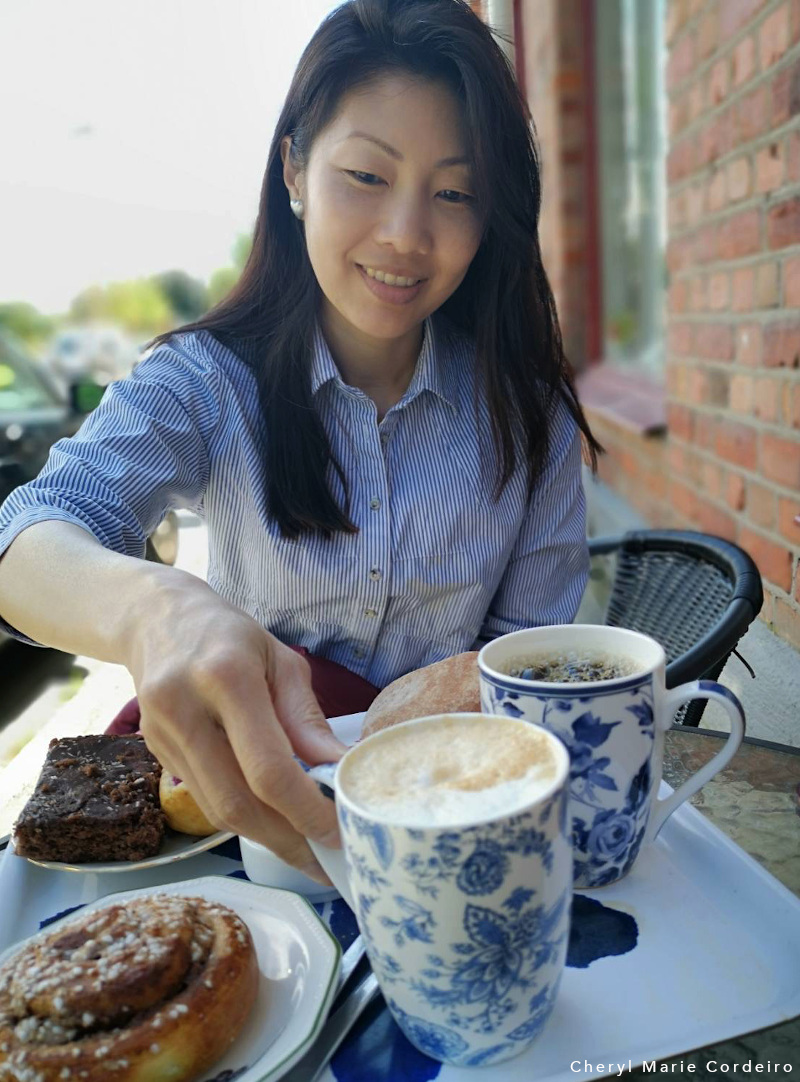At Flickorna på Färjenäs Café, Karl IX:s väg 1, Gothenburg, Sweden.
Text & Photo © CM Cordeiro & JE Nilsson 2022
Karl IX:s Göteborg is the city of Gothenburg before present day Gothenburg. It was founded in 1603 by Karl IX at Färjestaden on Hisingen with the intention of creating a trading post and an enclave for Dutch naturalized foreigners to the Swedish west coast. The Danes weren’t happy about the idea of a thriving and competing trading post near Denmark, so Karl IX:s Gothenburg was burnt to the ground in 1611. What to do? Well, move the city upstream and build fortresses with as many cannons Denmark facing as possible. That new city upstream is now present day Gothenburg. Power of attorney was given to Dutchman Cornelius Corneliusson on November 9, 1603, to construct the new city of Gothenburg.
Along Karl IX:s road, you’ll find a cozy café, Flickorna på Färjenäs, in one of the oldest houses built in the 1700s in Färjestaden. The café is managed by Lisa Burden and Susanna Lindelöf Frisk. The interior of the café contains an eclectic mix of modern and Gustavian style furniture. With warm blankets strewn over its chairs and sofas, it is the perfect café to have your weekend breakfast in leisure.
The café is an impoartant social focal point of the neighbourhood. It offers light lunches and catering services for events. All breads and buns are homebaked, and custom bakes for individuals with food allergies are catered for. Some of my favourite items to have are the Swedish west coast shrimp sandwich, and their småkakor (small cookies). The traditional Swedish cookies are baked using recipes from the early 1900s. Not feeling up for breakfast? Just coffee will do too.
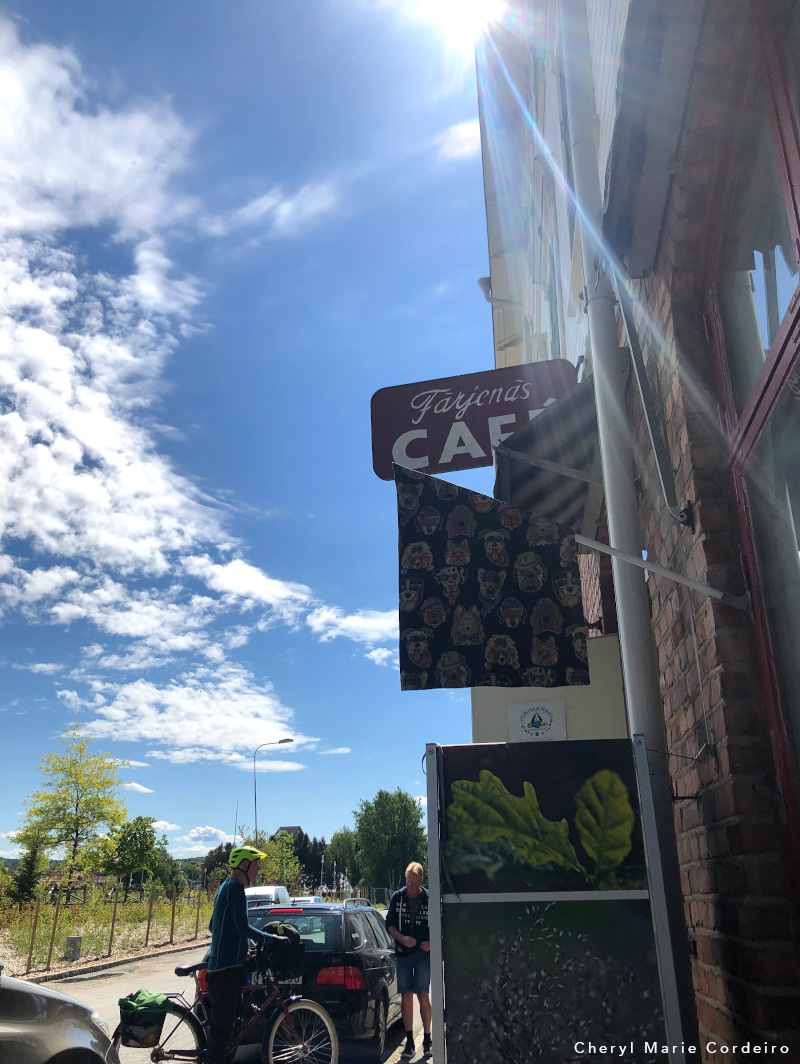
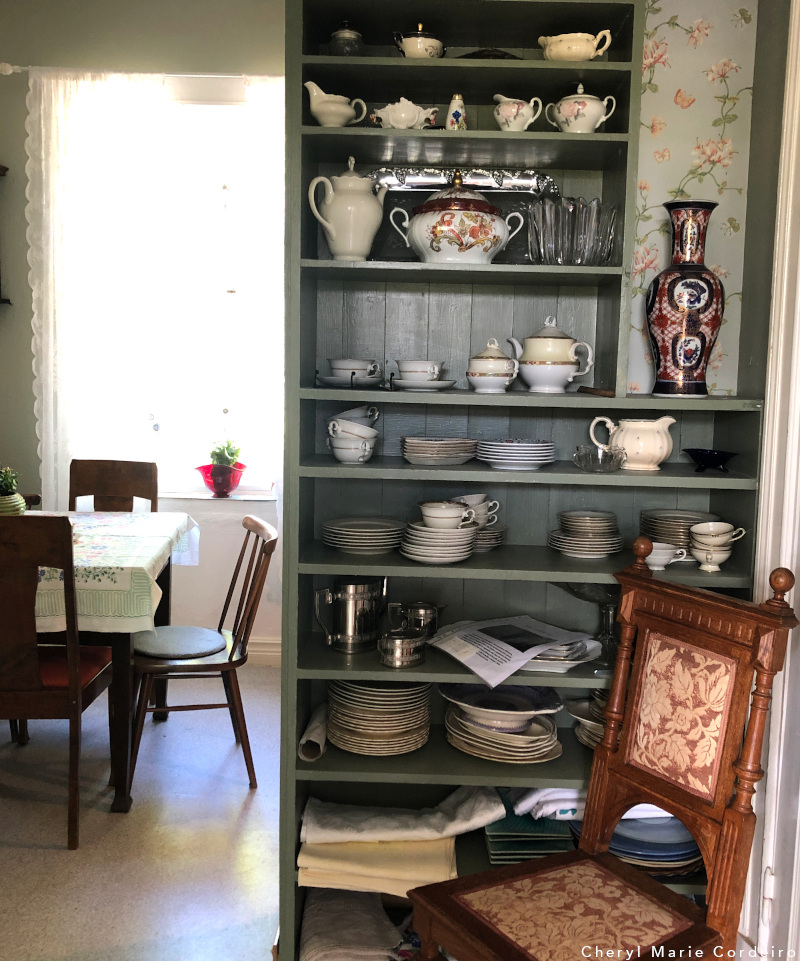
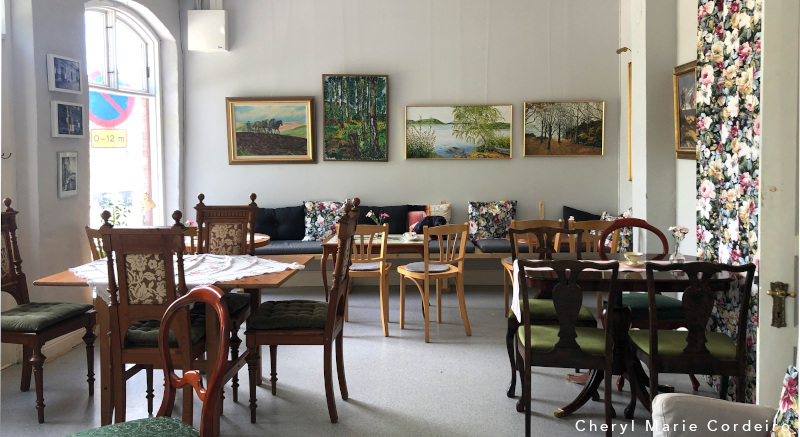
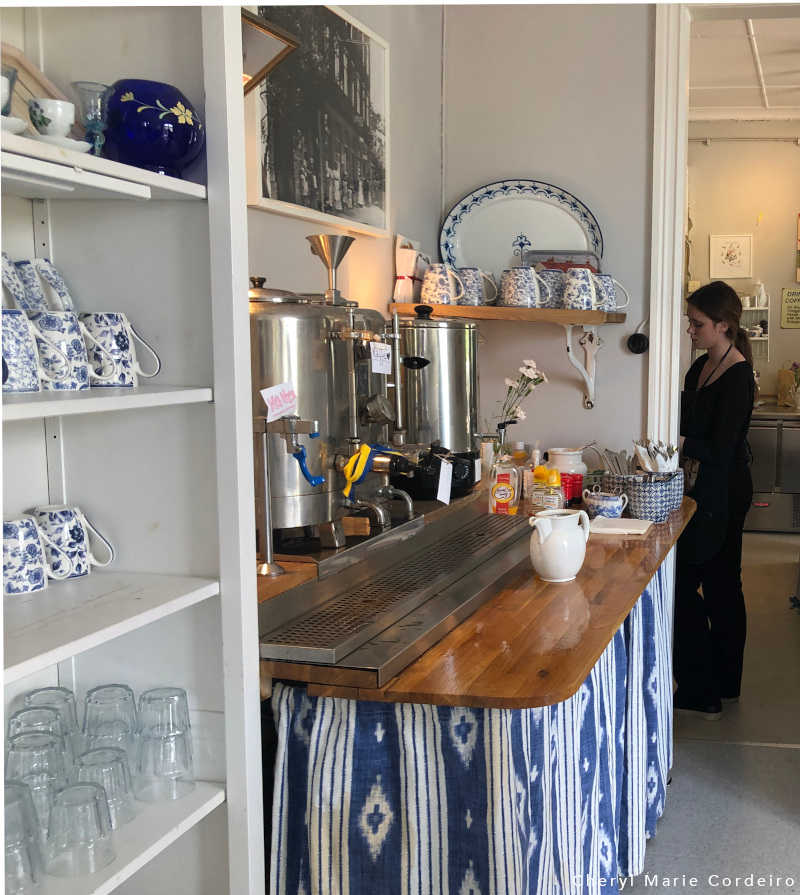
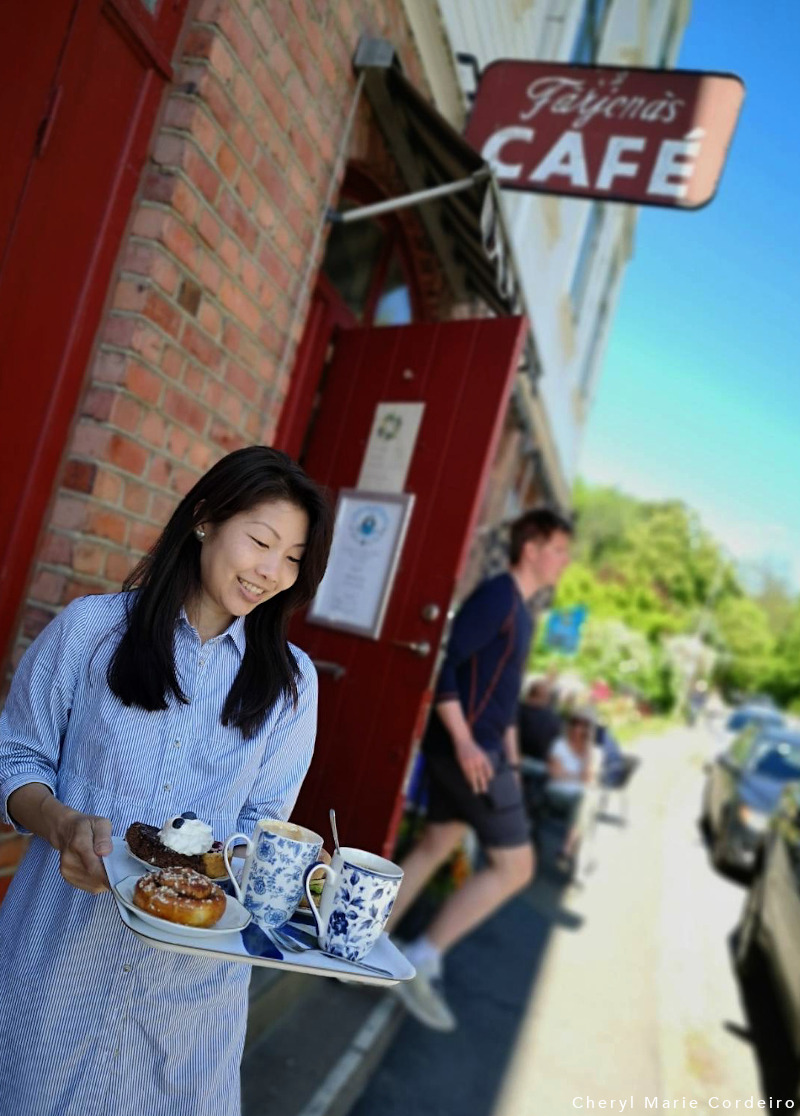
The early summer sun gave a perfect opportunity to have breakfast outdoors at Flickorna på Färjenäs Café.
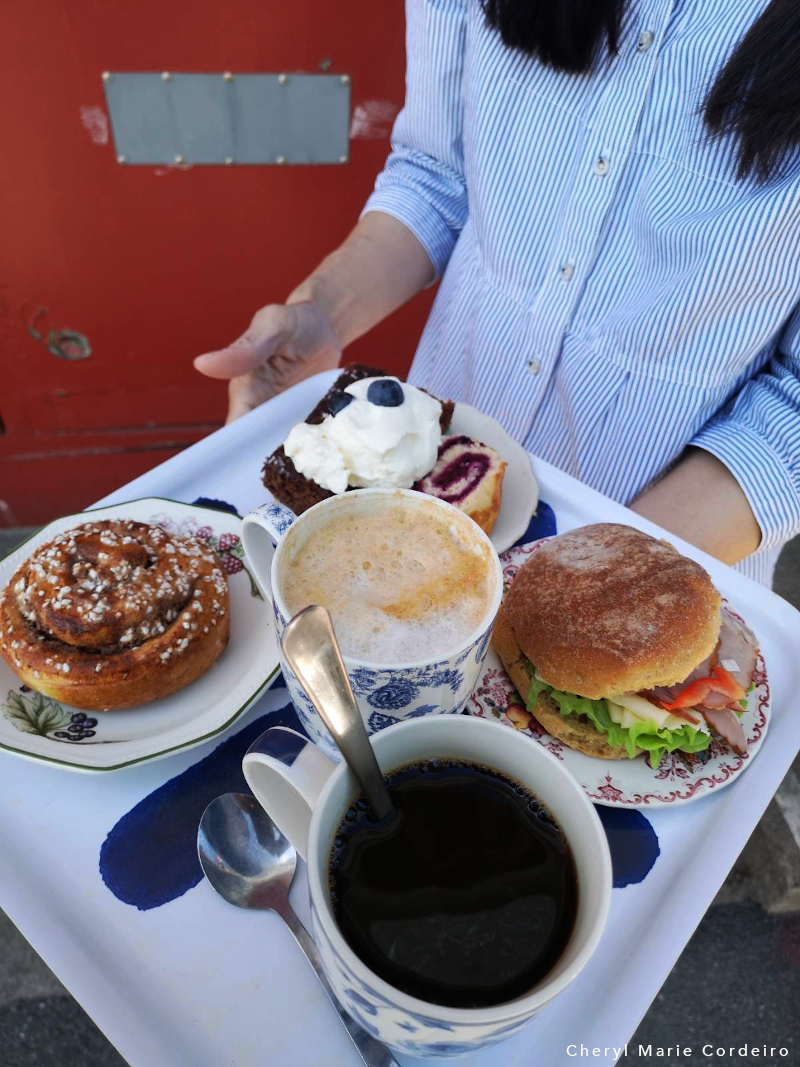
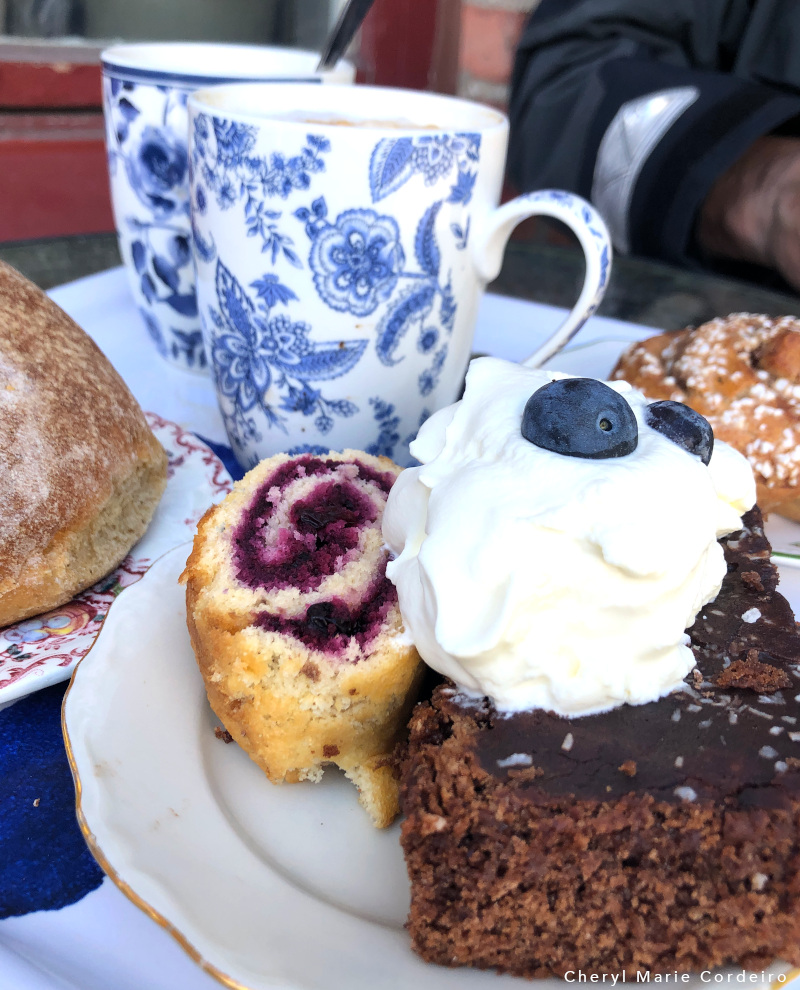
The weekend breakfast included a blueberry spongecake roll, and a brownie topped with whipped cream.
Karl IX:s Göteborg
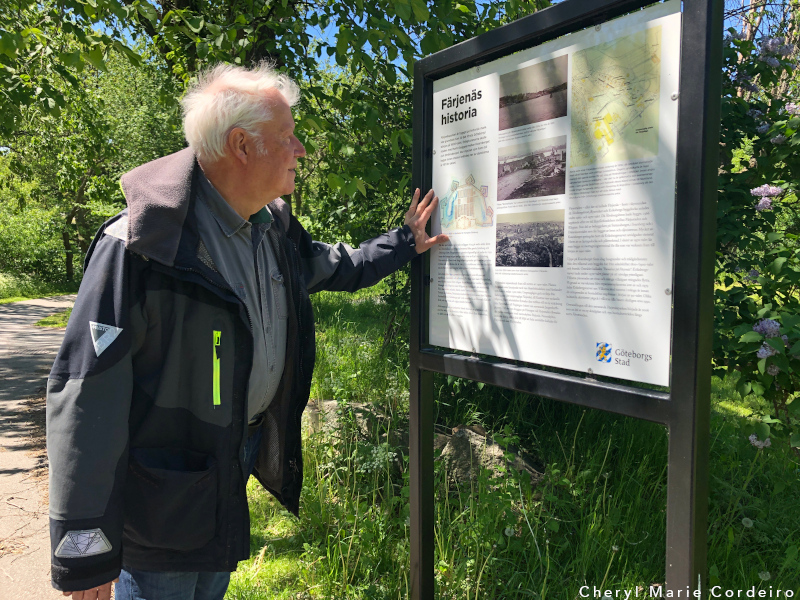
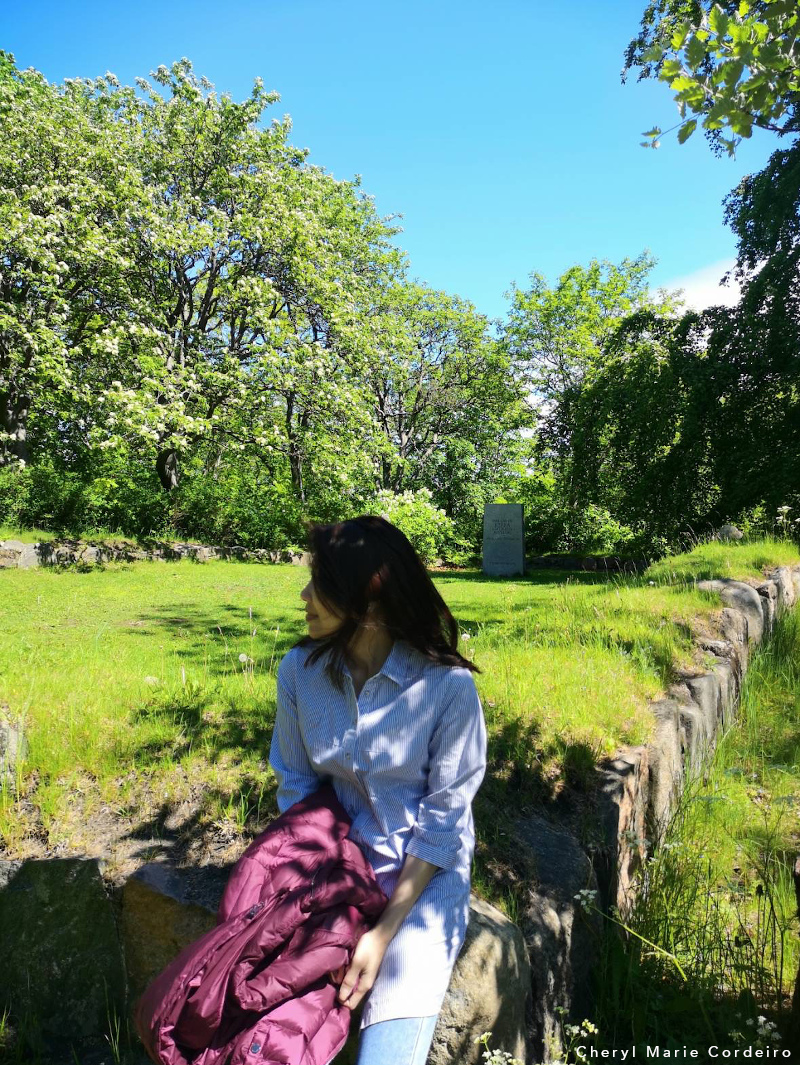
Sitting at the corner foundation stone of a church that was built in 1603 in Karl IX:s Gothenburg.
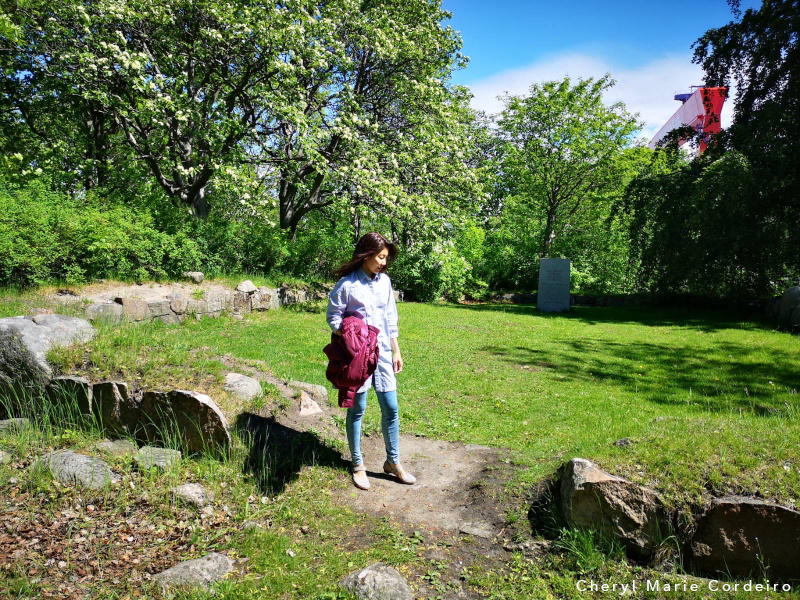
Standing at what once was the entrance to the church built in 1603 in Karl IX:s Gothenburg.

